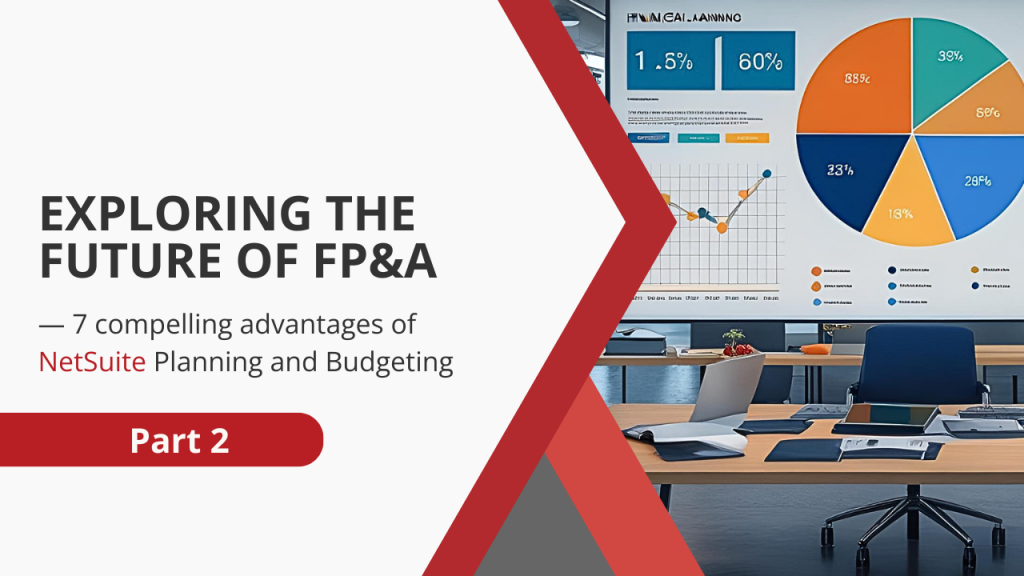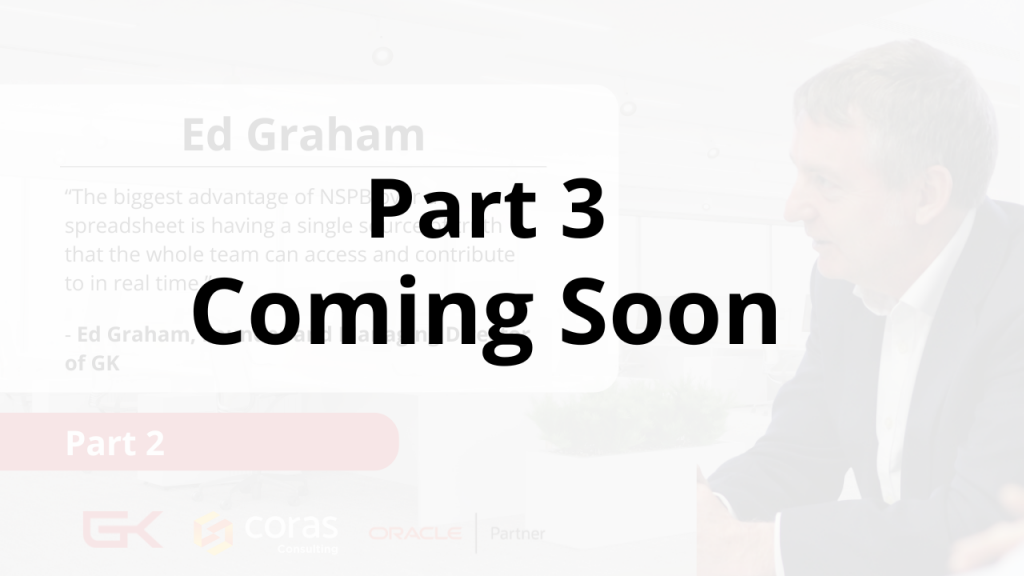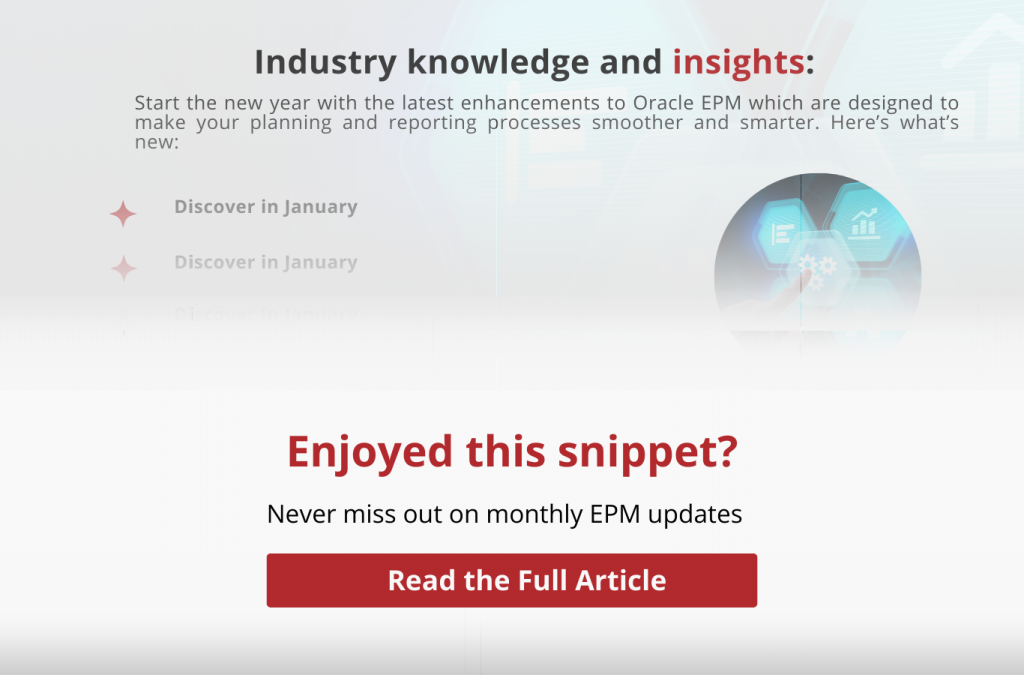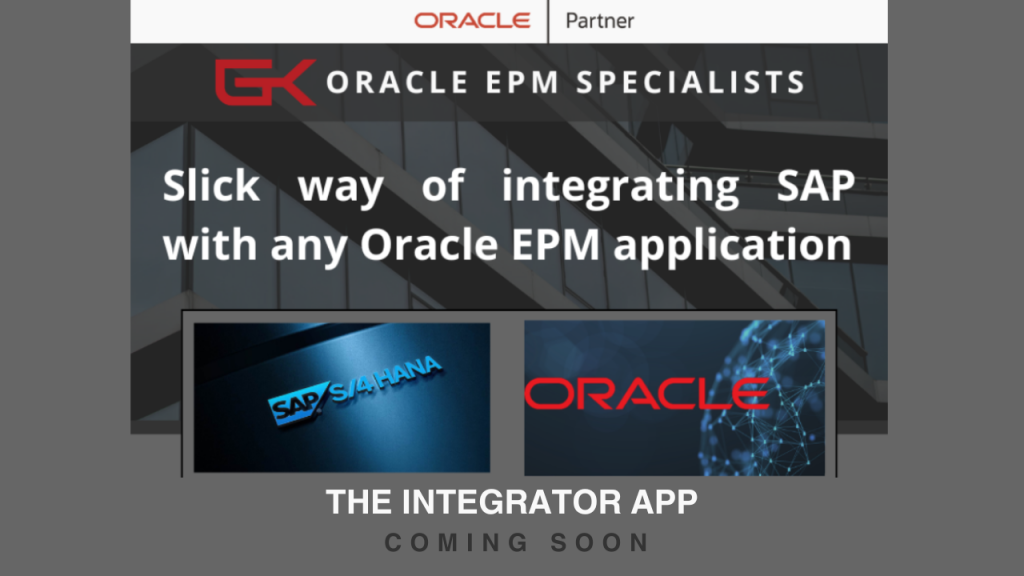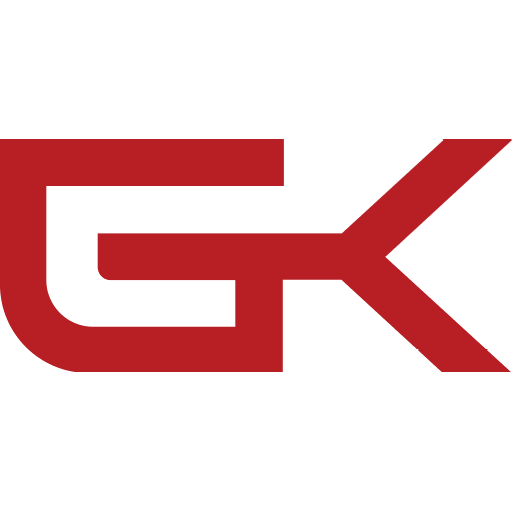
5 Ways an FP&A Tool Will Transform Your Finance Function
Spreadsheets are deeply embedded in how finance teams operate – and for good reason. They’re flexible, accessible, and widely understood. But as businesses grow, the limitations of managing budgets, forecasts, and reporting in Excel quickly become clear.
In this blog, GK’s Managing Director Ed Graham explores five practical ways a dedicated FP&A tool – such as Oracle EPM or NetSuite Planning & Budgeting (NSPB) – can significantly improve the way your finance team works. From increased data control to real-time collaboration and automation, the benefits go far beyond convenience.
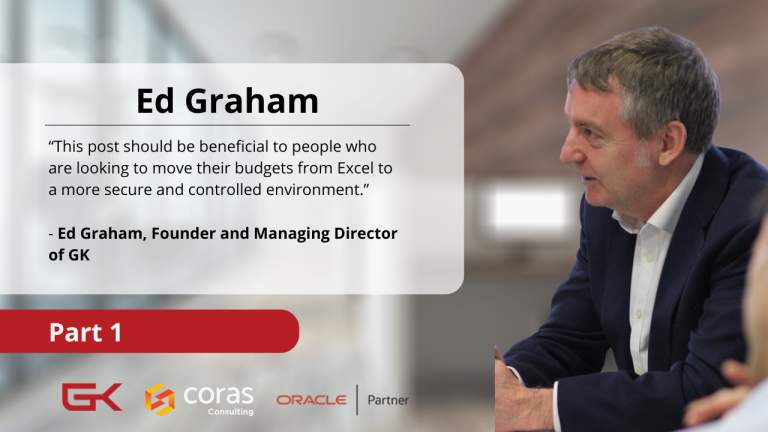
- Single source of truth – Benefit: Consistent outputs
As opposed to spreadsheets an FP&A tool will provide a platform to bring all your data together. Financial data is pulled from your ERP system while Budgets and Forecasts are produced and live in the tool. Different scenarios can be produced from the same data set and versions stored for comparative and historic purposes.
Everybody having access to the latest set of numbers is the minimum requirement for a team to build trust in their outputs.
2. Speed of thought analysis – Benefit: Ability to quickly find variances
Being able to analyse numbers in real time by drilling down to find variances or comparing scenarios increases the efficiency of your FP&A team. An FP&A tool should include the ability to drill right back to the source transaction in the source system giving the user line of sight from published numbers to the underlying transactions.
The usual approach of collating data in a spreadsheet and using pivot tables to perform analysis is greatly enhanced by storing multiple dimension and their hierarchies in a FP&A tool allowing real time pivoting of any level against and dimension.
3. Platform for collaboration – Benefit: Ability to work anywhere
A modern FP&A tool based in the cloud is a platform for collaboration allowing your team access to work from anywhere. Data integration, updates and commentary made in a tool are available in real time to all users.
One major benefit is to being able to store and run a task list in a FP&A tool, tasks can be assigned to different users and the process of completing the tasks managed through reporting and control.
4. Process automation – Benefit: Increased efficiency
Automation of data collection, standard calculations and forecast preparation gives the benefit of efficiency allowing users to concentrate on analysing the data instead of pulling it together.
Greater automation also reduces lead times, for example being able to report faster so the team can get to planning and analysis. Letting the system do the work adds to the consistency of the output and removes chances for manual error.
5. Auditability, control and data security – Benefit: Control of data
Modelling in a tool means setting up calculation and assumptions that will be consistent across scenarios and users enabling businesses to rely on the data quality and the end results. Calculations built in the system can be audited at any time and control can be had by programming an FP&A tool to run a consistent process.
FP&A data can include unpublished numbers, personal employee data and confidential planning scenarios, all which need to be secured from the outside world and internally to authorised users to avoid data loss and reputational damage.
Conclusion
Oracle EPM and NetSuite each bring powerful capabilities to finance teams – but when integrated thoughtfully, they can truly transform how organisations plan, report, and make decisions.
At GK, we help businesses get the most out of Oracle EPM, while our trusted partners at Coras are experts in delivering seamless NetSuite implementations. Together, we’ve developed a proven approach that simplifies the integration process and delivers real results.
Interested in implementing NetSuite or optimising your current setup? Explore Coras’ NetSuite services here.
Want to talk through your current planning setup? Get in touch - we’re happy to help you explore the options.
Featured content
Part 3: here, we’ll dive deeper into how leading FP&A tools – including NSPB and Oracle EPM – compare in practice. We’ll explore the challenges finance teams often face during implementation, share tips for overcoming them, and highlight how AI can be leveraged to make forecasting faster, smarter, and more accurate.
We’re live on G-Cloud 14. This means public sector organisations can now easily access our Oracle EPM services on the Digital Marketplace!
Have you seen the Oracle EPM’s latest update on our insights page? If not, now is the time!
We have developed a slick way of integrating SAP with any Oracle EPM application including the ability to integrate with SAP S4 Hana public cloud.


